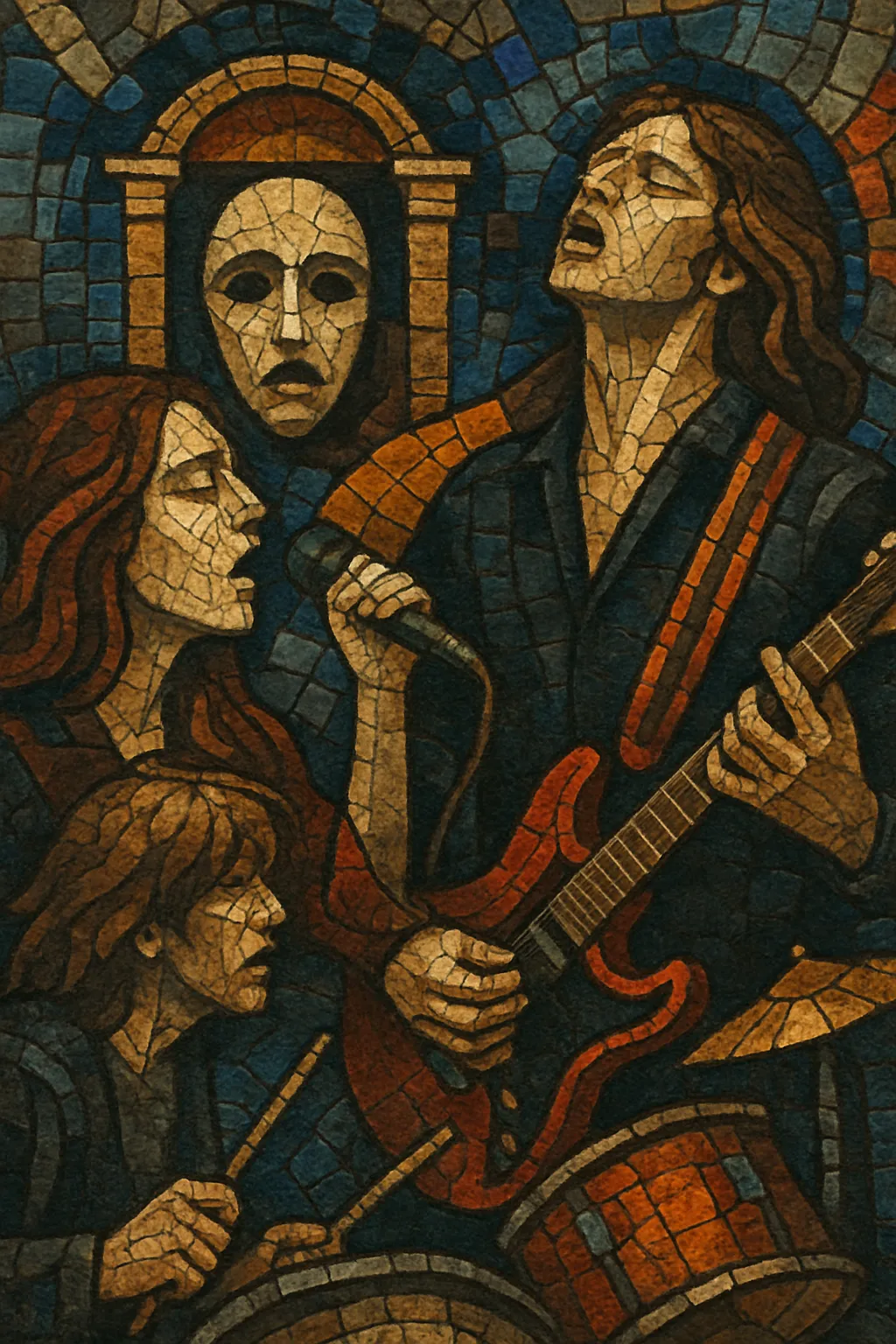
Rock opera is a narrative-driven form of rock music in which a sequence of songs tells a coherent story, often through distinct characters, recurring leitmotifs, and theatrical arcs.
Unlike a loose concept album, a rock opera typically emphasizes plot, character development, and musical continuity, borrowing structural ideas from opera (overtures, reprises, arias/solos, and dramatic climaxes) while retaining the instrumentation, rhythms, and sonic vocabulary of rock.
Works can exist as studio albums, staged productions, or films, and may range from guitar-centered ensembles to fully orchestrated scores with choirs and narration. The form emerged in the late 1960s with UK pioneers and grew alongside progressive and symphonic rock in the 1970s.
Rock opera coalesced in the late 1960s in the United Kingdom as rock artists experimented with long-form narrative. The Pretty Things’ "S.F. Sorrow" (1968) is widely cited as an early exemplar, while The Who’s "Tommy" (1969) codified the form for a global audience with its overture, leitmotifs, and character-led storytelling. The Kinks explored theatrical rock on works such as "Arthur" (1969) and later the explicitly operatic "Preservation" albums.
Through the 1970s, the form intertwined with progressive and symphonic rock. Genesis’s "The Lamb Lies Down on Broadway" (1974) presented a multi-act, character-driven narrative. Pink Floyd’s "The Wall" (1979) blended rock opera with concept-album craft and multimedia staging. Parallel to rock-band projects, stage-first rock operas and rock musicals rose: Andrew Lloyd Webber and Tim Rice’s "Jesus Christ Superstar" (1970) married operatic narrative with contemporary rock idioms. Jeff Wayne’s "War of the Worlds" (1978) added narration and symphonic textures.
The 1980s and 1990s saw metal and hard rock adopt operatic narrative: Queensrÿche’s "Operation: Mindcrime" (1988) and Styx’s "Kilroy Was Here" (1983) delivered plot-heavy albums with recurring themes and theatrical staging. Trans-Siberian Orchestra formed in the mid-1990s to create seasonal rock operas with orchestra and choir, popularizing the format for arena productions. Concept-forward progressive acts continued to blur lines between album, stage, and film.
In the 2000s, the form experienced revival and diversification. Green Day’s "American Idiot" (2004) became a Broadway musical, demonstrating the adaptability of rock opera between studio and stage. Project-based collectives like Ayreon produced multi-vocalist, multi-album rock operas with science-fiction arcs. Indie and alternative scenes (e.g., The Dear Hunter, Coheed and Cambria) sustained serialized storytelling. Today, rock opera thrives as both a studio and live medium, integrating modern production, multimedia visuals, and cross-genre orchestration.

